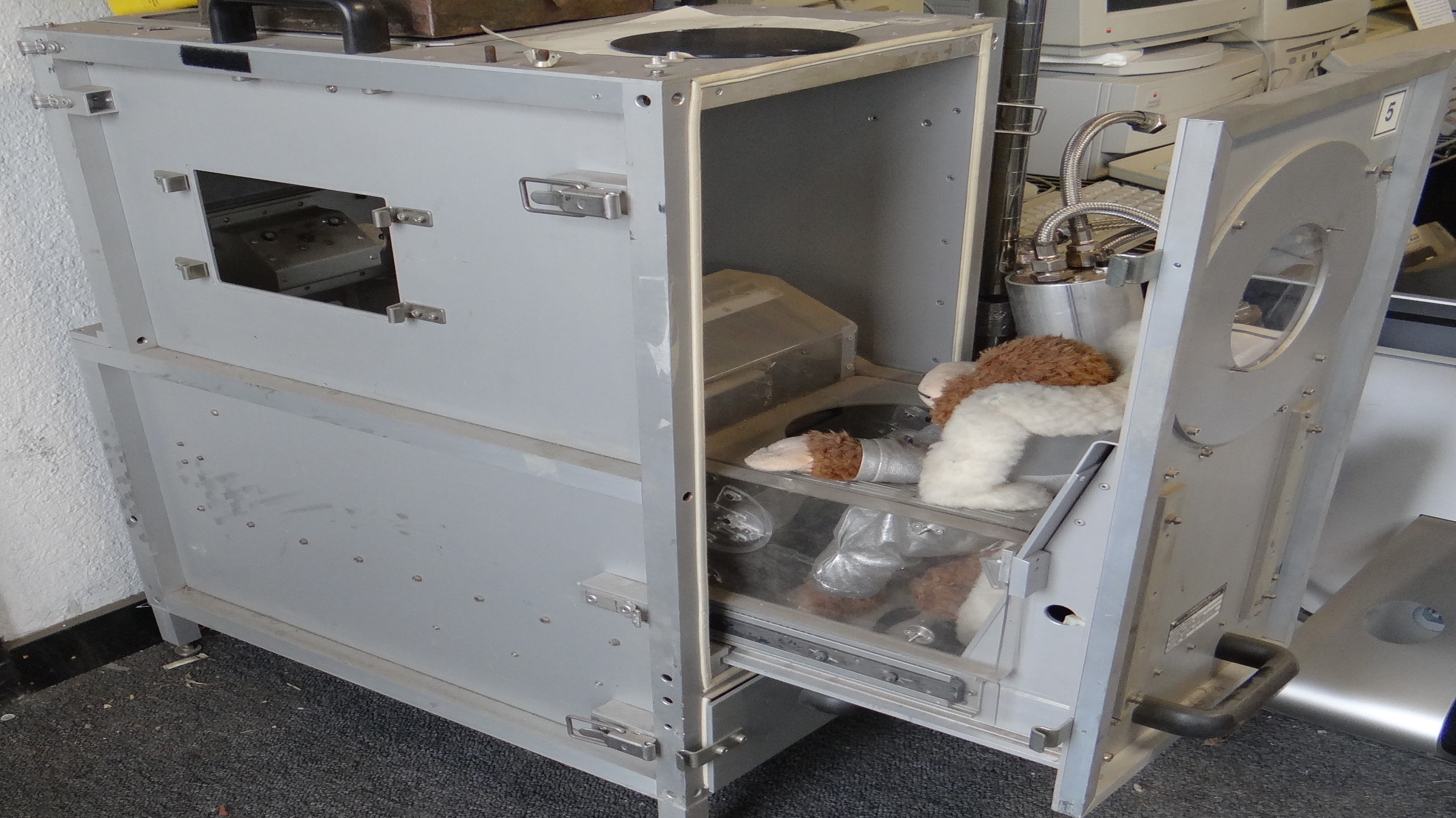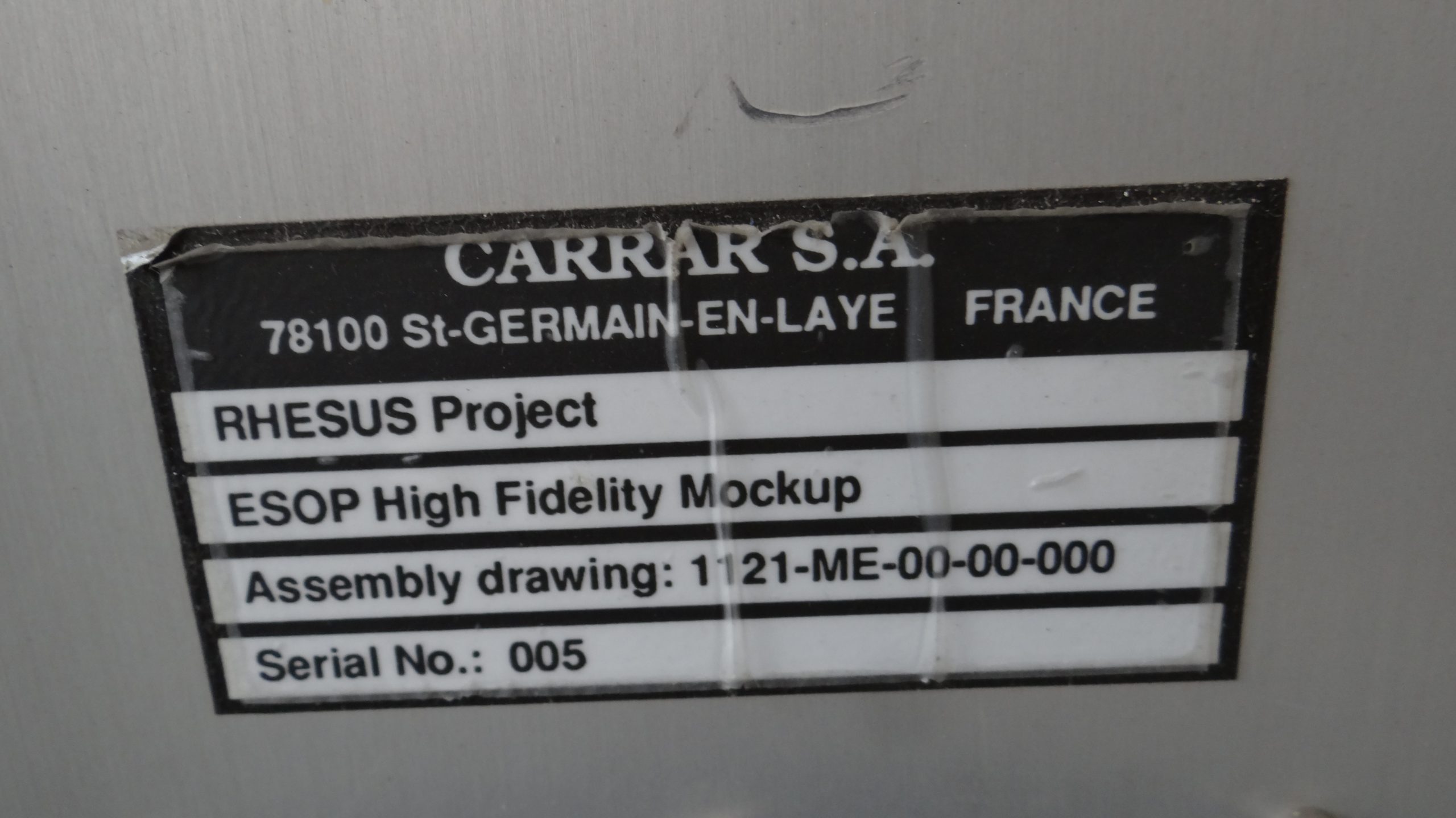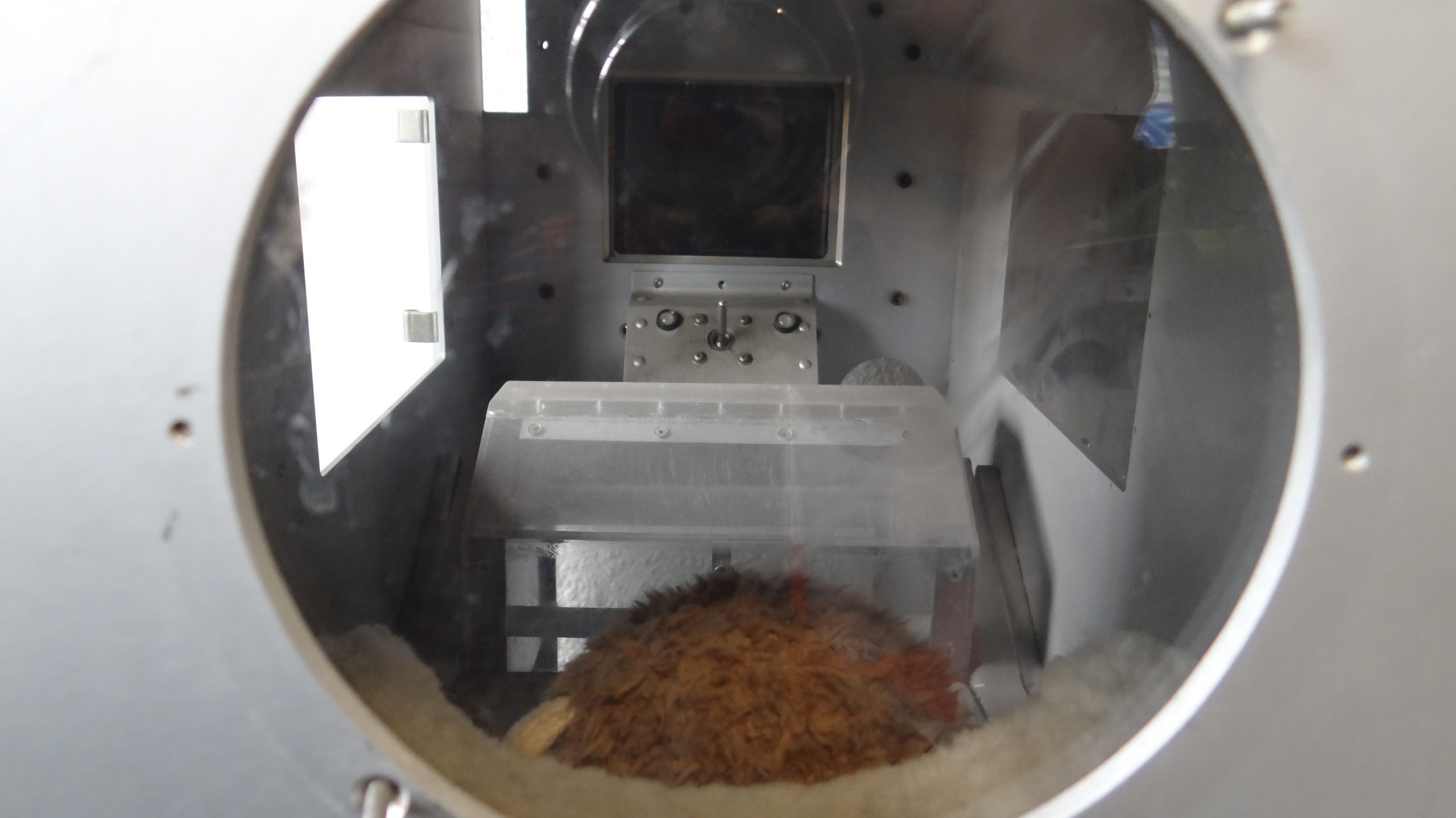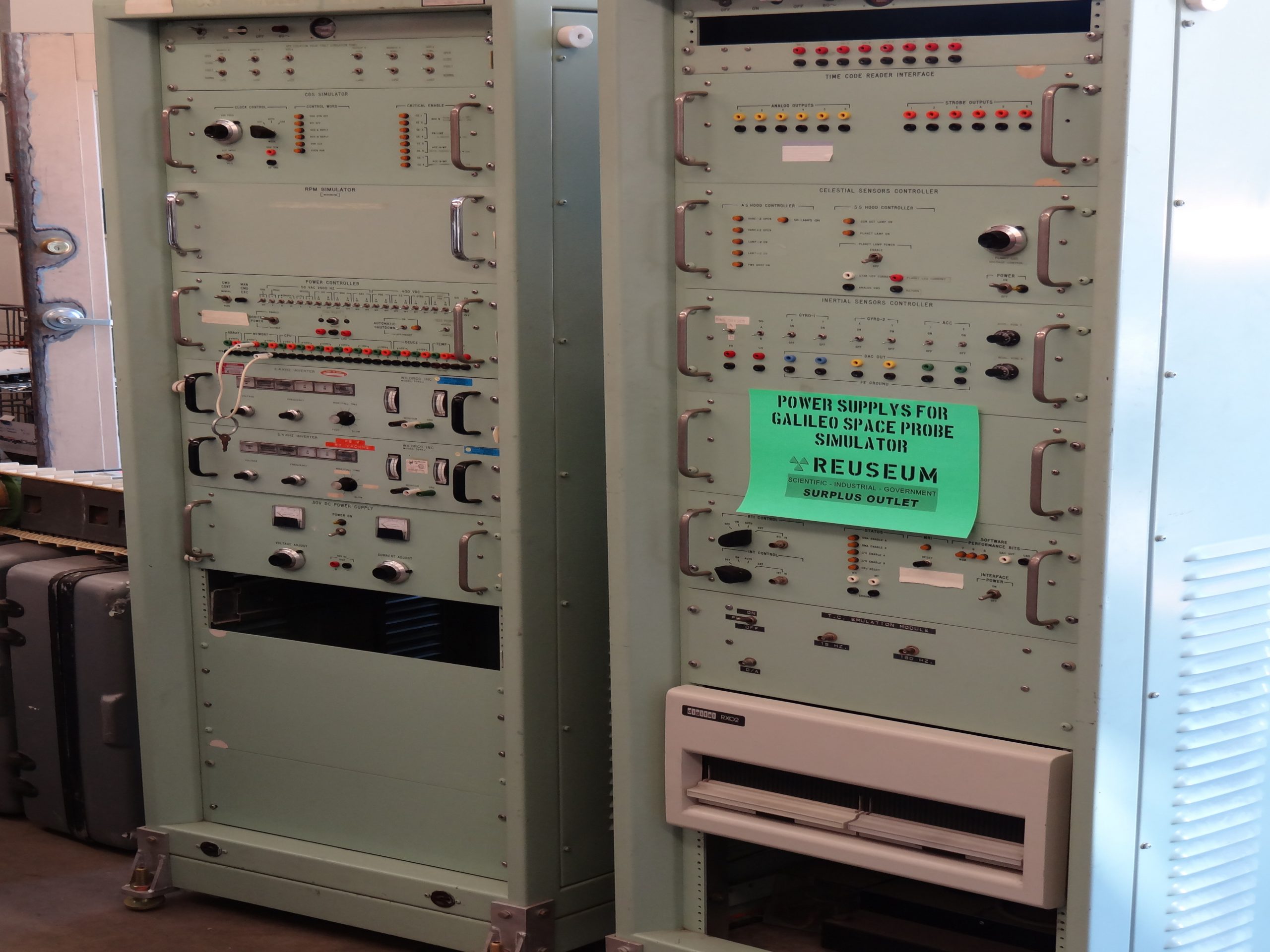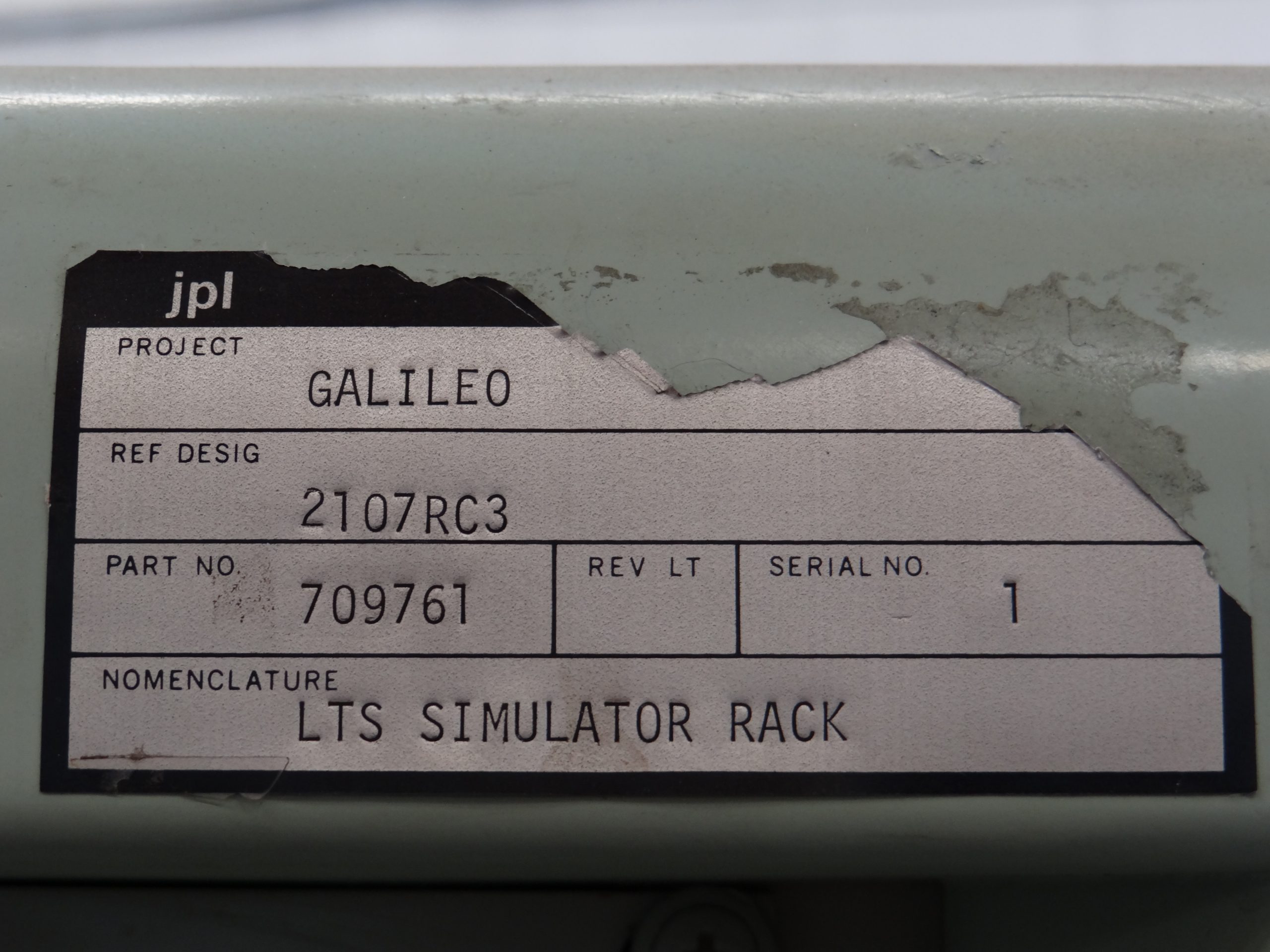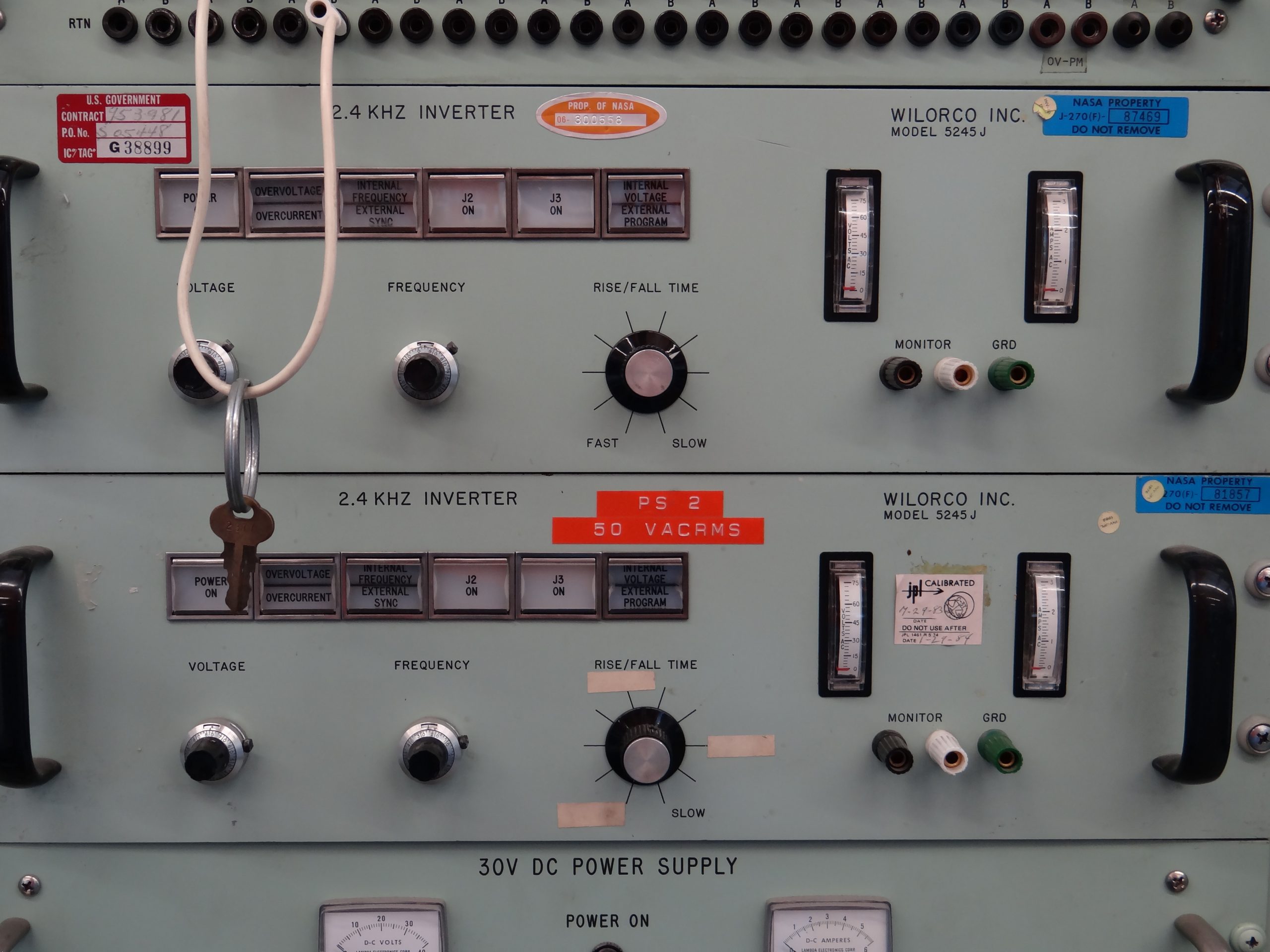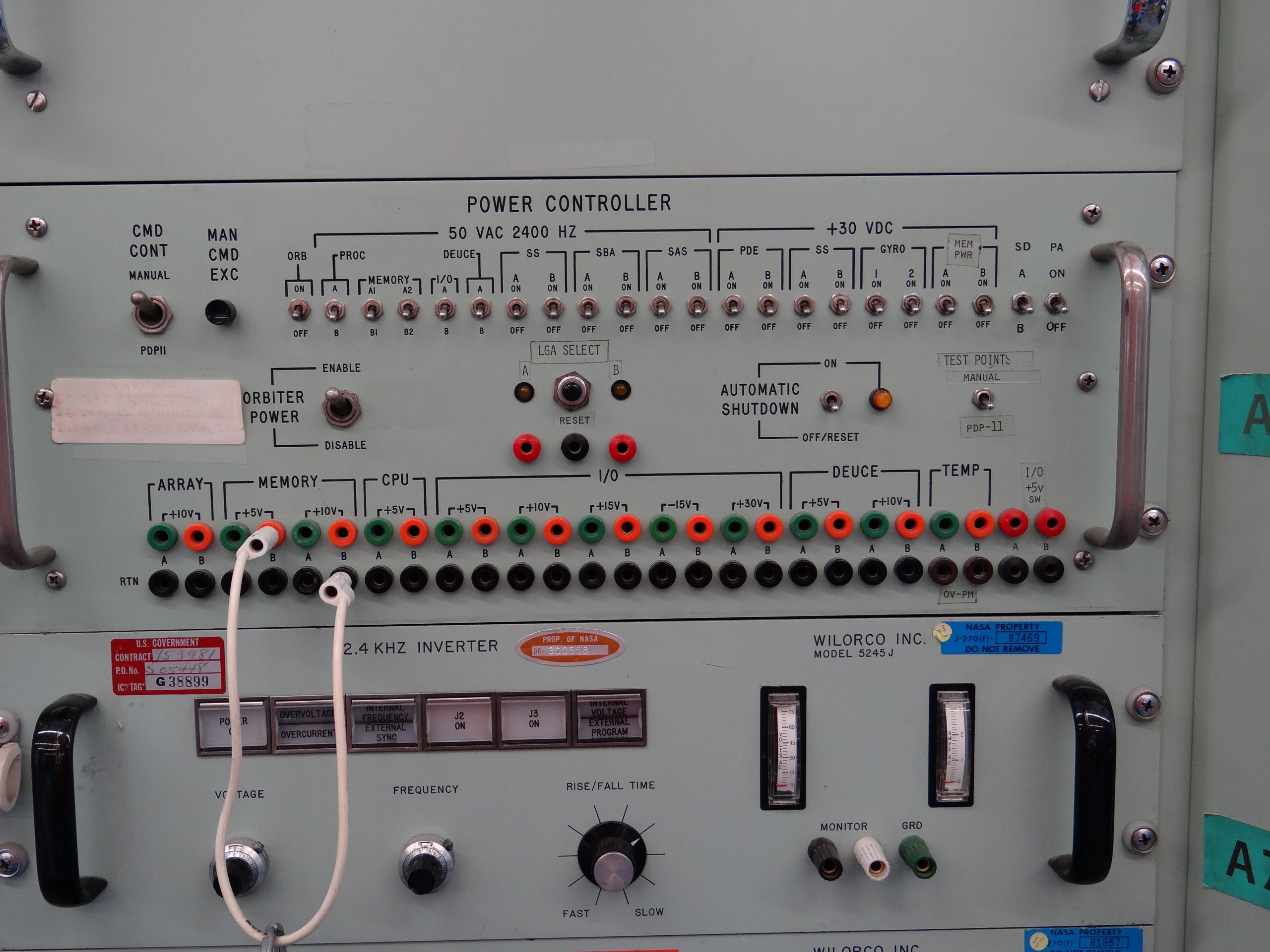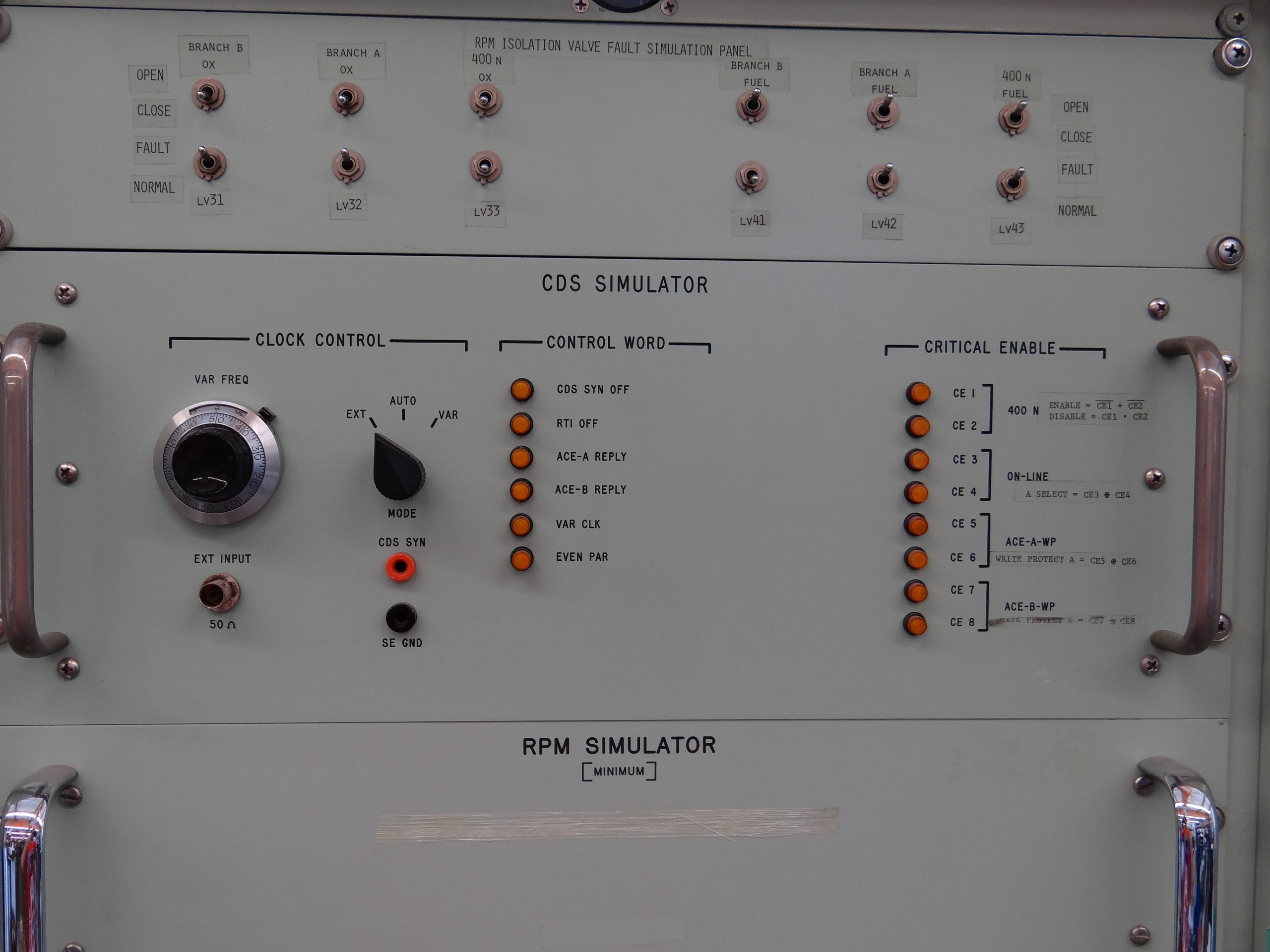Museum at the Reuseum!
RHESUS Project – Monkey Box
Before humans actually went into space, one of the prevailing theories of the perils of space flight was that humans might not be able to survive long periods of weightlessness. American and Russian scientists utilized animals – mainly monkeys, chimps and dogs – in order to test each country’s ability to launch a living organism into space and bring it back alive and unharmed.
The United States launched flights containing primate passengers primarily between 1948 and 1961 with one flight in 1969 and one in 1985. France launched two monkey-carrying flights in 1967. The Soviet Union and Russia launched monkeys between 1983 and 1996. Overall, thirty-two non-human primates flew in the space program; none flew more than once.
MISS EVE
The integrated system, composed of an Automated Baseline Change Detection (ABCD) imaging software and IMSS mobility base, was called MISS EVE (Mobile Intelligent Sensor System–Environmental Validation Expert). This vehicle was designed especially to navigate in DOE Waste Storage Facilities with initial system testing being performed at Fernald in June 1996. The primary objective of the system was to apply robotic and optical sensor technology to the operational inspection of mixed toxic and radioactive waste stored in barrels. The ABCD system detected rust, corrosion, leaks, dents, and bulges in the barrels.
After further development and more extensive integration, the prototype was installed and tested at the Radioactive Waste Management Facility at INEEL in April 1997. Evaluation of the integrated system in RWMC Building 628, containing approximately 10,000 drums, demonstrated an easy to use system with the ability to properly navigate through the facility, image all the defined drums, and process the results into a report delivered to the operator on a GUI interface and on hard copy.
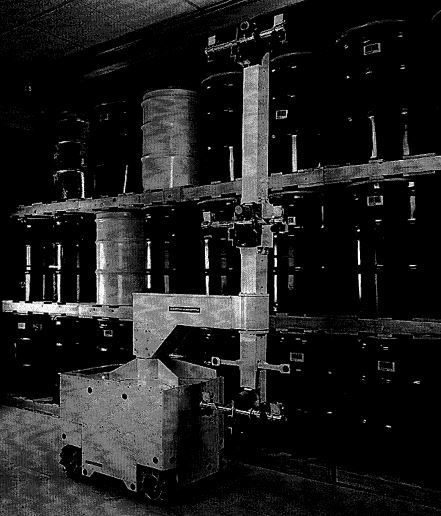
JPL Galileo – LTS Simulator Rack
Project Galileo began at JPL in the late 1970s with the objective of developing an orbiter and probe for further exploration of Jupiter. Kenneth Holmes, in charge of looking for the Galileo control computer, and the other engineers ran old Voyager attitude control programs on several processors. One of the processors proved itself to be superior: Itek’s 2900 series. Using 2900 series processors, each with 4-bit words, Itek assembled a 16-bit, low-power, flying minicomputer. ATAC’s basic cycle time was 250 nanoseconds, more then five times faster than the Voyager computer’s cycle.
These racks were power supply racks for the full LTS simulator rack. The purpose of the simulations were to validate actual flight sequences of commands, a capability that would greatly improve the reliability of the Galileo mission and future space missions.
